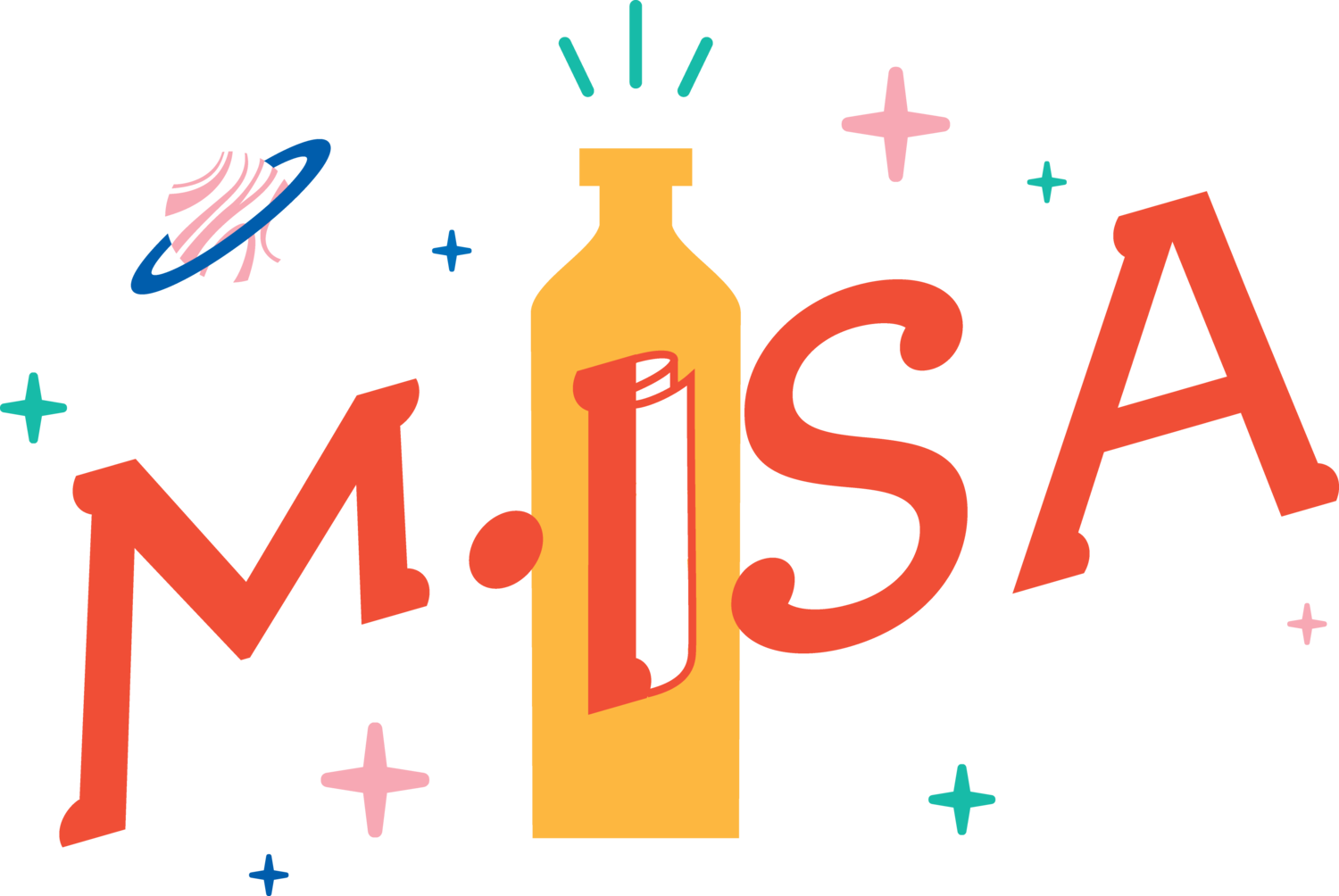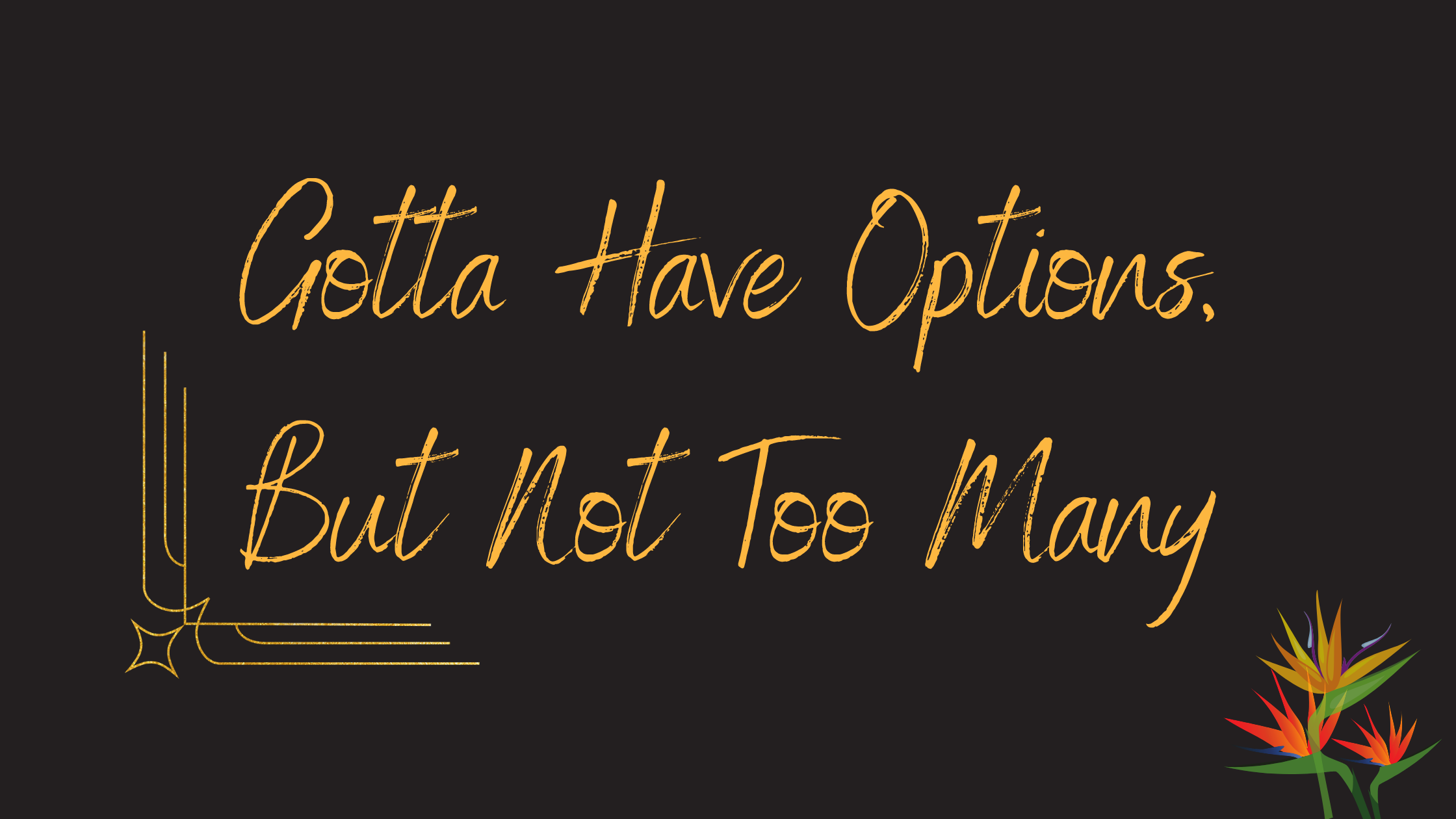Preventing Choice Overload in Website Marketing
Gotta have options, but not too many.
Though customers are attracted to variety, offering too many options makes it harder for them to decide to buy and less likely for them to be satisfied with their purchase.
“...When we’re presented with more choices, making the “right” or “correct” decision begins to feel more crucial and, at the same time, more unattainable.”
Here’s the case for keeping your website marketing simple.
What is choice overload?
Research has shown that while we like having options, our brains struggle to make decisions when presented with a vast array of choices. Referred to as “choice overload,” this phenomenon has been widely written about by psychologists, researchers, and economists in the digital age.
“...The brain's decision-making capabilities work optimally with an “intermediate” number of choices – in other words, more choice is better up to a certain point, after which choice becomes overwhelming and decision-making is impaired,” explains Elena Reutskaja, associate professor of marketing at IESE Business School. Reutskaja was part of a team that used MRIs to study peoples’ brain activity when choosing from different sets of options.
How do buyers react to choice overload?
People may react to choice overload differently. Some, experiencing overwhelm, avoid making a decision at all. Others may agonize over their choice, trying to gather more and more information. When they do buy, even if they made a good decision, they often keep wondering if another option would have been better. This reduces their level of satisfaction in their decision.
Either way, choice overload often results in stress, anxiety, and disappointment- probably not the customer experience you’re aiming for.
“My colleagues and I have found that increased choice decreases satisfaction with matters as trivial as ice cream flavors and as significant as jobs.”
How can website marketing prevent analysis paralysis?
It has become pretty normal for there to tons of options to scroll through. TV shows on Netflix, Hulu, and wherever else we’re streaming. 36 different colors of the same phone case on Amazon. News articles. Posts on our social media feeds. Potential dates on Bumble. Often, we never stop scrolling and never make a decision to invest in something.
Because this is so normalized in how we use the internet, it often doesn't occur to folks that endless options might not be the best way to land the sale on their website or web store.
Here are a few things to consider for preventing choice overload with your website marketing.
Organize & Simplify Your Offers
The way you layout and present your offers on your website matters. Do you offer dozens of services? Consider not listing them all on your Homepage or Our Services page.
If you have a lot of offers, we recommend developing web pages for offer categories. Then, the category page can be linked to from your Homepage and Menu- and the more specific product or service pages can be linked to from the category page. For example, our Homepage links to our Website Optimization Category page, which then links to specific website optimization service pages like Web Page Copywriting, Search Engine Optimization, Branding, and Web Design & Development.
Whereas we used to list all of our services on our Homepage, breaking it down into 6 category pages made our Homepage a lot easier to understand, navigate, and select where to go for more information. Choosing which of 6 categories is most relevant to your marketing needs is a lot easier than choosing from 30+ services.
Something else we did- and recommend to other service providers who have a lot of offer pages- is to just take certain web pages out of the navigation. You don’t have to kill the page, if that hurts your heart, you can just prevent it from cluttering your menu, homepage, or Our Services page. Should the need arise, you can send the link to the page, or leads can find it via search engines.
Streamline Calls To Action
Another way we can accidentally overwhelm web visitors is when we’re asking them to do too many things at once.
Call? Chat? Download something? Fill out the form? Click one of 20 links? Do whatever the pop up is asking? All of these options can get distracting, even frustrating.
Some pages do need several pathways- like your Homepage or Services page. Some could be streamlined to just one ask, like your Contact Page, sales page, or lead capture landing pages.
But, do be strategic about how much you’re asking the web visitor to do, and streamline and simplify as much as possible.
Time Limits
If it doesn’t matter whether they buy now or next year, there are a lot of opportunities for additional options to come flooding in. There is so much time for customers to compare and contrast with your competitors or procrastinate trying DIY.
This is part of the reason why things like “sale ends tonight” or “we’re only accepting 5 members” are so frequently and effectively used in marketing. Limiting time limits choice and helps prevent choice overload.
Consider ways to create urgency for people to make a decision to buy within a set period of time.
Simplify Comparisons
In her excellent article on choice overload, Behavior Strategist Jennifer Clinehens recommends making it easy to compare features across products as Calendly does with their plan comparison table.
This simple comparison reduces the amount of work (and navigation) a customer has to do in order to understand their options- which may relieve some stress from their decision-making process.
This can also be an effective tactic for showing why you’re offering a better solution than your competitors.
For example, TrustedPals uses a table to contrast what their pet insurance plans cover as compared to other pet insurance brands.
Since I’m right here, I’ll use myself as a case study. This table was effective enough to get me to select TrustedPals for my cat’s insurance policy without looking too closely into other options.
Is there a magic number for the perfect amount of choices to present customers with?
Wouldn’t it be great if there was one? Reutskaja’s MRI study found that people preferred selecting from a set of 12 images rather than a set of 6 or 24, but she cautions against considering 12 a magic number. Another researcher theorizes that the optimal number of options is somewhere between 8 and 15. But, there is hardly an agreed upon “right” number.
There does seem to be a consensus that the right number of options varies depending on the context of the choice.
For example, I like looking at 30 different styles of Miz Mooz boots but would likely have a panic attack if my accountant gave me 30 different options for how to file my taxes. I probably won’t research the best candy to buy at a candy store, but I will research the best business attorney to work with.
So, how are you to know if your website or web store is offering an overwhelming amount of choice?
The magic number is… to ask people. Ask your customers, ask a marketing expert, ask your friends, ask your colleagues, ask your luvah what their impressions of your website or web store are. If it’s overwhelming to them, simplify.
Wondering if your website is resulting in analysis paralysis? You can book us for a Website Checkup and we’ll give you expert recommendations for how to simplify and streamline.



